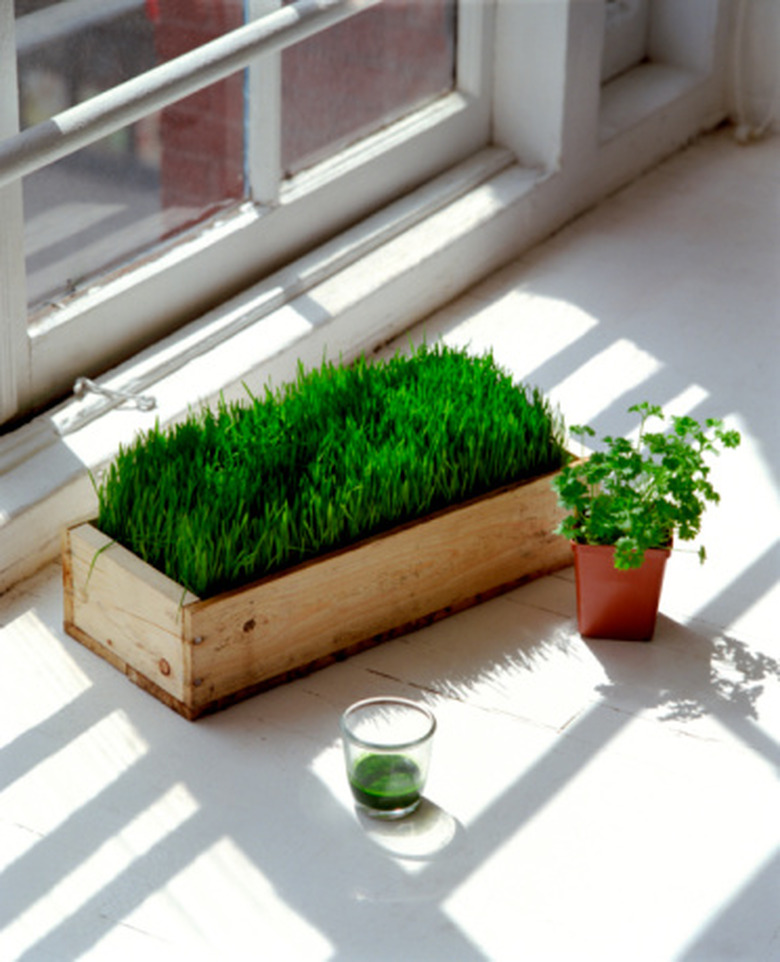What Kingdoms Are Able To Photosynthesize?
Living organisms are organized into different taxa, or groups, in a system known as taxonomy. When Carl Linneaus first started classifying plants and animals in the mid-1700s, there were two kingdoms: plantae (plants) and animalia (animals).
Over time, these kingdoms have changed drastically as new discoveries are made, and new classification systems are suggested. In 1990, Carl R. Woese and his colleagues put forth the three domain system: Bacteria, Archaea and Eukarya (meaning any organism with a nucleus in its cells).
Eight years later a zoologist named Thomas Cavalier-Smith proposed a system with six kingdoms, where kingdom Bacteria (also known as Monera) had two subdivisions of Eubacteria (true bacteria) and Archaebacteria.
In 2015 Cavalier-Smith and colleagues revised that system to now include seven kingdoms: Bacteria, Archaea, Protista (protists), Chromista (algae), Fungi, Plantae (nonvascular and vascular plants) and Animalia (animals).
Process of Photosynthesis
Process of Photosynthesis
Some organisms are able to use photosynthesis to take energy from the sun, carbon dioxide and water and convert it into chemical energy. Photosynthesis converts these compounds into oxygen, which is released into the atmosphere, and organics, like sugar or carbohydrates. Of the seven kingdoms, however, only some include photosynthetic organisms. Which kingdoms can photosynthesize?
Kingdom Protista
Kingdom Protista
The protist kingdom was first suggested by German zoologist Ernst Haecklel in 1866. It was the third kingdom at the time, intended to create a place for microorganisms. Protists are not quite animal or plant life, and they lack a nucleus which makes them prokaryotic. Yet protists make up more than a quarter of the world's photosynthesis! Protists can include dinoflagellates, diatoms and multicellular algae.
Photosynthetic protists often have symbiotic relationships with other organisms around them. Photosynthetic dinoflagellates that live around coral polyps fix inorganic carbon from sunlight, giving nearby corals extra energy and nutrients to create a calcium carbonate skeleton. Protists are primary producers, which means they are at the bottom of the food chain and provide food for many aquatic species.
Kingdom Plantae
Kingdom Plantae
This kingdom includes all vascular and nonvascular plants, such as mosses, ferns, conifers and flowering plants. Almost all plants are able to photosynthesize with the exception of a few parasitic forms.
Plant cells have many different organelles that carry out functions essential to the plant's survival. One type of organelle is a chloroplast. Only roughly 0.001 mm thick, without chloroplasts, plants would not be able to photosynthesize.
Two pigments, chlorophyll a and chlorophyll b, give chloroplasts a green color, which is also why plant leaves are green. Chloroplasts are energy-producing powerhouses that create and store food through photosynthesis.
Kingdom Chromista
Kingdom Chromista
Individuals in kingdom Chromista are not closely related to plants or other algae. They differ from other organisms because they have chlorophyll c, as opposed to a or b, and don't store energy in starches. Some microscopic diatoms with silica skeletons and giant kelps in the oceans all fall under kingdom Chromista. Most are photosynthetic, and they are most important in aquatic ecosystems.
Kingdom Bacteria
Kingdom Bacteria
Cyanobacteria, also known as blue-green algae, are also photosynthetic organisms. Though they resemble algae, which are protists, they lack a membrane-bound nucleus, which makes them prokaryotes, classified in the kingdom Bacteria.
In contrast to plants, which have two types of chlorophyll pigments, cyanobacteria only have chlorophyll a, in addition to others like the blue pigment phycobillin, which helps give them their blue-green color, yellow carotenoids and sometimes the red pigment, phycoerythrin.
Cyanobacteria can be found in some of the harshest environments on earth, such as in hot springs, underneath frozen lakes and under rocks in scorching deserts. Most are only able to grow where light is present.
Kingdom Archaea
Kingdom Archaea
Like bacteria, archaeans also lack a nucleus and membrane-bound organelles. There is only one photosynthetic archaeon, Halobacterium, which photosynthesizes very differently from plants and bacteria. Instead of using chlorophyll with many proteins, it uses one protein (called a bacteriorhodopsin) to absorb light using a form of vitamin A.
Cite This Article
MLA
Taylor, Lindsey. "What Kingdoms Are Able To Photosynthesize?" sciencing.com, https://www.sciencing.com/kingdoms-able-photosynthesize-8391394/. 1 July 2019.
APA
Taylor, Lindsey. (2019, July 1). What Kingdoms Are Able To Photosynthesize?. sciencing.com. Retrieved from https://www.sciencing.com/kingdoms-able-photosynthesize-8391394/
Chicago
Taylor, Lindsey. What Kingdoms Are Able To Photosynthesize? last modified March 24, 2022. https://www.sciencing.com/kingdoms-able-photosynthesize-8391394/
